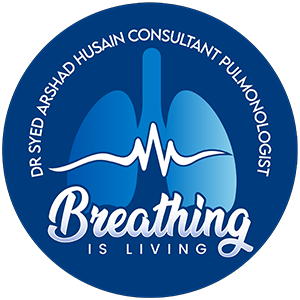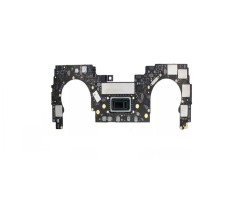Decoding Diabetes: Unraveling the Differences Between Type 1 and Type 2
The word "diabetes" is thrown around quite a bit, often conjuring images of blood sugar checks and insulin injections. While it’s true that both Type 1 and Type 2 diabetes share the common thread of elevated blood glucose levels, the underlying causes, how they develop, and their management strategies are distinctly different. Understanding these key distinctions is crucial, not only for those living with diabetes and their families but also for anyone seeking a clearer picture of this widespread condition. Think of them as two different pathways leading to the same destination – high blood sugar – but the journey and the roadmap to manage it look quite different. Let's delve into the intricate world of diabetes and illuminate the fundamental differences between its two primary forms.

The word "diabetes" is thrown around quite a bit, often conjuring images of blood sugar checks and insulin injections. While it’s true that both Type 1 and Type 2 diabetes share the common thread of elevated blood glucose levels, the underlying causes, how they develop, and their management strategies are distinctly different. Understanding these key distinctions is crucial, not only for those living with diabetes and their families but also for anyone seeking a clearer picture of this widespread condition. Think of them as two different pathways leading to the same destination – high blood sugar – but the journey and the roadmap to manage it look quite different. Let's delve into the intricate world of diabetes and illuminate the fundamental differences between its two primary forms.
At its core, diabetes is a chronic metabolic disorder characterized by the body's inability to regulate blood glucose, also known as blood sugar. Glucose is the primary source of energy for our cells, and insulin, a hormone produced by the pancreas, acts like a key that unlocks the doors of our cells, allowing glucose to enter and fuel them. When this system malfunctions, glucose builds up in the bloodstream, leading to a cascade of potential health problems over time. However, the "why" behind this malfunction is where Type 1 and Type 2 diabetes diverge significantly.
Type 1 Diabetes: An Autoimmune Attack
Imagine your body's immune system, normally the valiant protector against harmful invaders like bacteria and viruses, mistakenly identifies the insulin-producing beta cells in the pancreas as foreign enemies. In Type 1 diabetes, this is precisely what happens. It's an autoimmune disease where the immune system launches an attack, gradually destroying these vital beta cells. As more and more beta cells are destroyed, the pancreas loses its ability to produce insulin, or produces very little. Consequently, glucose cannot enter the cells for energy, leading to its accumulation in the bloodstream.
The onset of Type 1 diabetes is often sudden and can occur at any age, although it's most commonly diagnosed in children and young adults, which is why it was historically referred to as juvenile diabetes or insulin-dependent diabetes. Because the body produces little to no insulin, individuals with Type 1 diabetes require lifelong insulin therapy to survive. This typically involves multiple daily injections of insulin or the use of an insulin pump, which delivers a continuous supply of insulin under the skin. They also need to meticulously monitor their blood glucose levels throughout the day to adjust their insulin doses based on their food intake, physical activity, and other factors. Managing Type 1 diabetes is a constant balancing act, requiring education, diligence, and a strong partnership with a healthcare team. While the exact triggers for this autoimmune attack are not fully understood, genetic predisposition and environmental factors are believed to play a role.
Key Characteristics of Type 1 Diabetes:
- Cause: Autoimmune destruction of insulin-producing beta cells in the pancreas.
- Insulin Production: Little to no insulin production.
- Onset: Often sudden, can occur at any age, but most common in children and young adults.
- Treatment: Requires lifelong insulin therapy (injections or pump).
- Weight: Individuals are often lean or have experienced recent weight loss at diagnosis.
- Genetic Predisposition: Stronger genetic link compared to Type 2.
- Lifestyle Factors: Not directly caused by lifestyle choices like diet or lack of exercise.
Type 2 Diabetes: Insulin Resistance and Relative Deficiency
Type 2 diabetes, on the other hand, is a more complex condition that typically develops gradually over many years. The primary issue in Type 2 diabetes is insulin resistance. This means that the body's cells become resistant to the effects of insulin, making it difficult for glucose to enter them. Initially, the pancreas tries to compensate by producing more insulin to overcome this resistance. However, over time, the pancreas may not be able to keep up with the increased demand, and its ability to produce sufficient insulin may decline, leading to a relative insulin deficiency.
Unlike Type 1 diabetes where there's an absolute lack of insulin, in Type 2 diabetes, there's often still some insulin being produced, especially in the early stages. This is why it was previously known as non-insulin-dependent diabetes or adult-onset diabetes, although it's increasingly being diagnosed in children and adolescents due to rising rates of obesity. Lifestyle factors, such as being overweight or obese, having a sedentary lifestyle, and having a family history of Type 2 diabetes, play a significant role in its development.
The management of Type 2 diabetes is often multifaceted and can involve lifestyle modifications, oral medications, and sometimes insulin injections or other injectable medications. Lifestyle changes, including weight loss (even a modest amount can make a big difference), adopting a healthy eating plan, and engaging in regular physical activity, are often the first line of treatment and can be very effective in improving insulin sensitivity and managing blood sugar levels. When lifestyle changes alone are not sufficient, various oral medications are available that work in different ways to lower blood glucose, such as increasing insulin sensitivity, stimulating insulin production, or reducing glucose absorption. Over time, some individuals with Type 2 diabetes may eventually need insulin therapy to achieve adequate blood sugar control.
Key Characteristics of Type 2 Diabetes:
- Cause: Insulin resistance (cells don't respond effectively to insulin) and relative insulin deficiency (pancreas may not produce enough insulin over time).
- Insulin Production: Variable; may be normal, high (initially), or low (later stages).
- Onset: Usually gradual, often develops over many years. Most common in adults, but increasingly seen in children and adolescents.
- Treatment: Often involves lifestyle modifications (diet and exercise), oral medications, and sometimes insulin or other injectable medications.
- Weight: Many individuals are overweight or obese at diagnosis.
- Genetic Predisposition: Significant genetic component, but strongly influenced by lifestyle factors.
- Lifestyle Factors: Strongly linked to factors like obesity, inactivity, and unhealthy diet.
Bridging the Gap: Similarities and Shared Concerns
Despite their distinct origins and development, both Type 1 and Type 2 diabetes share the critical consequence of elevated blood glucose levels, which, if poorly managed, can lead to a range of serious long-term complications. These complications can affect various parts of the body, including the eyes (retinopathy), kidneys (nephropathy), nerves (neuropathy), heart (cardiovascular disease), and blood vessels. Therefore, effective management, regular monitoring, and adherence to treatment plans are paramount for individuals with both types of diabetes to minimize these risks and maintain a good quality of life.
Furthermore, both types of diabetes require ongoing education and support. Learning how to manage blood sugar, understand nutrition, cope with the emotional aspects of a chronic condition, and prevent complications are lifelong endeavors for individuals living with either Type 1 or Type 2 diabetes. Support groups, diabetes educators, and strong relationships with healthcare providers play a vital role in empowering individuals to navigate their diabetes journey successfully.
In Conclusion:
While both Type 1 and Type 2 diabetes result in the body's inability to regulate blood sugar effectively, their underlying causes are fundamentally different. Type 1 diabetes is an autoimmune disease characterized by the destruction of insulin-producing cells, leading to an absolute need for insulin. Type 2 diabetes involves insulin resistance and a relative decline in insulin production, often linked to lifestyle factors. Understanding these distinctions is not just a matter of semantics; it has profound implications for diagnosis, treatment strategies, and the ongoing management of these chronic conditions. By recognizing the unique characteristics of each type, we can foster better understanding, more targeted research, and ultimately, improved care for all individuals living with diabetes.
To Know More: টাইপ ১ ও টাইপ ২ ডায়াবেটিস এর পার্থক্য
What's Your Reaction?




















